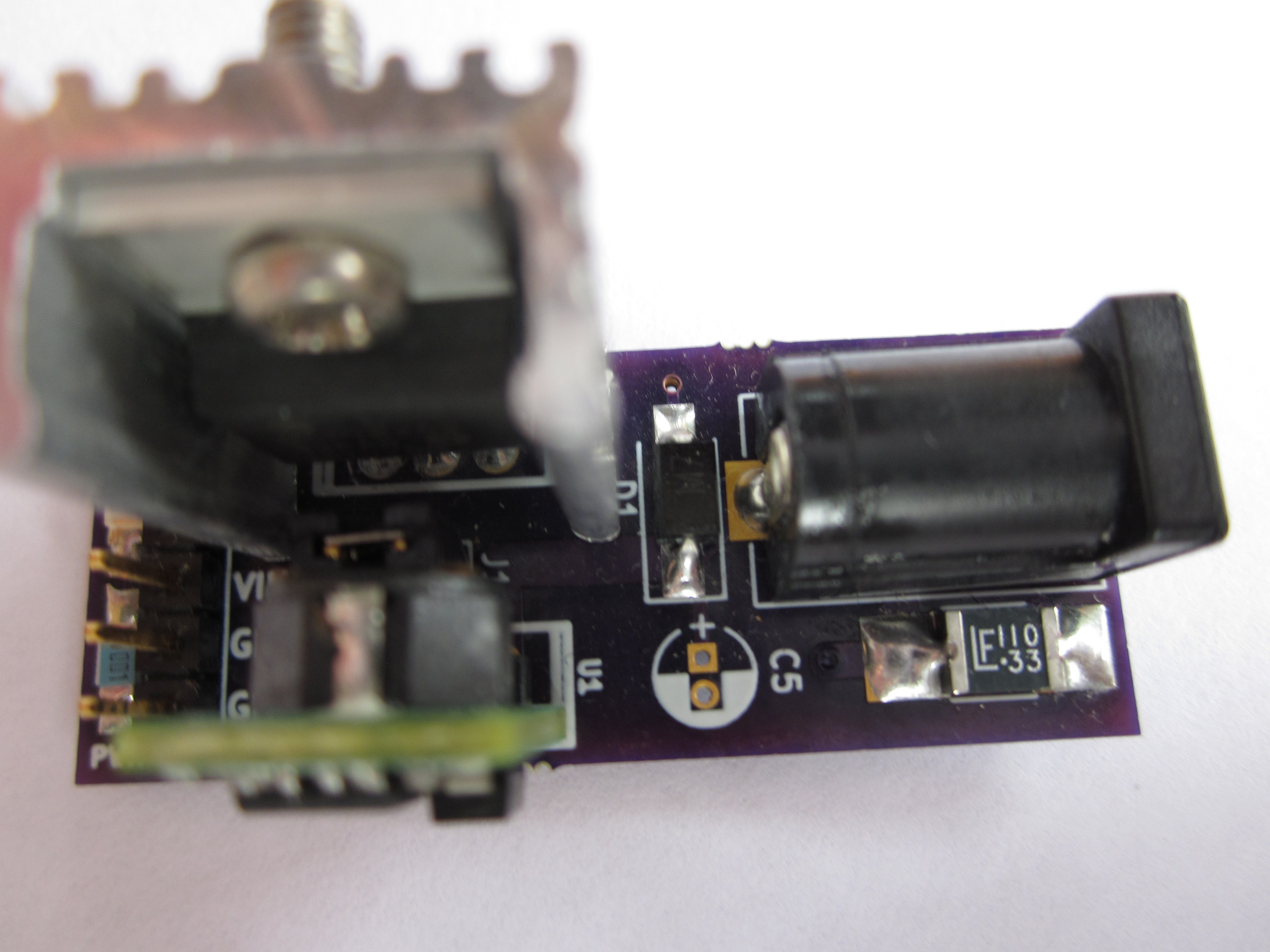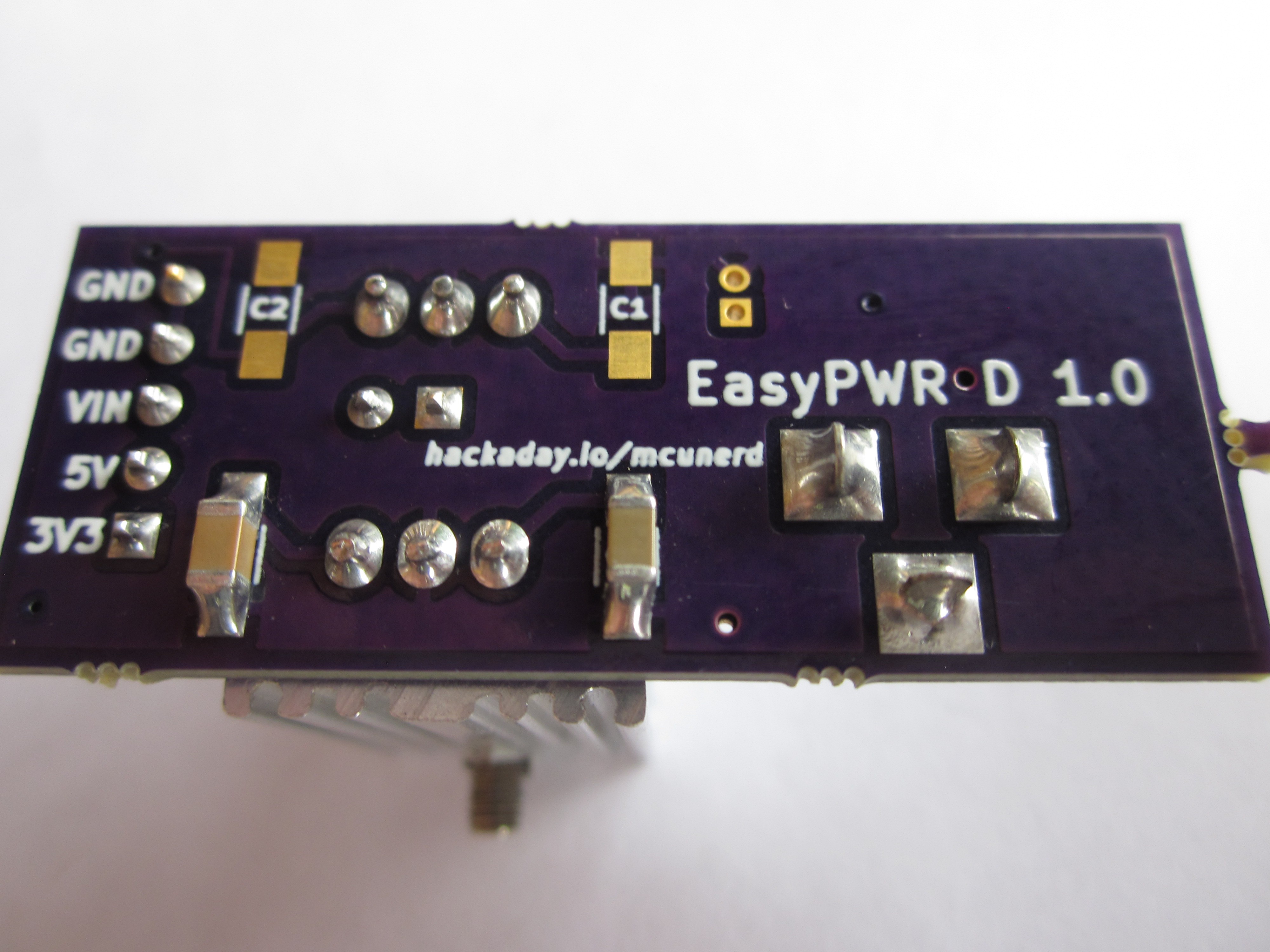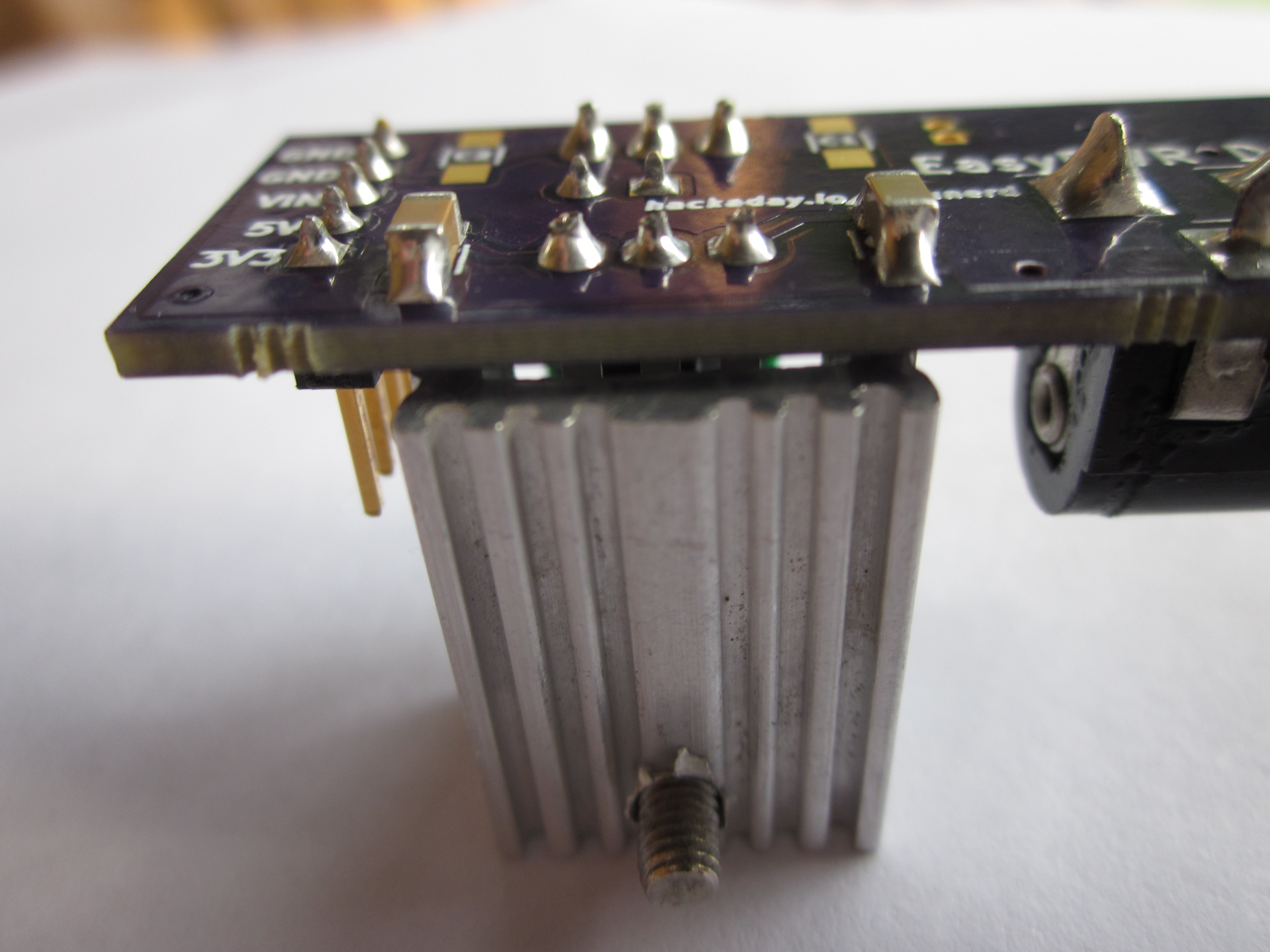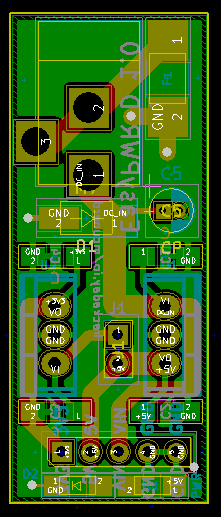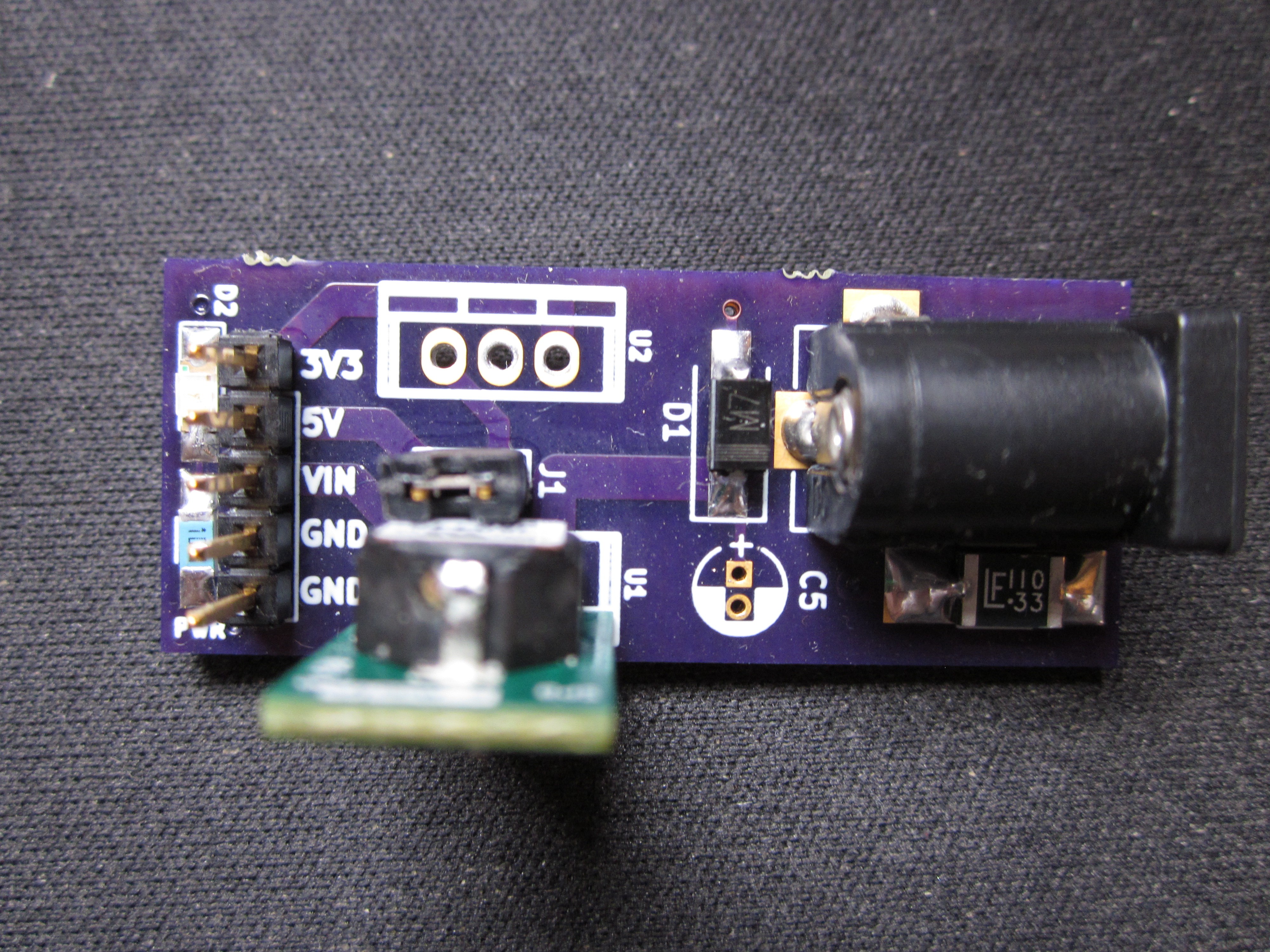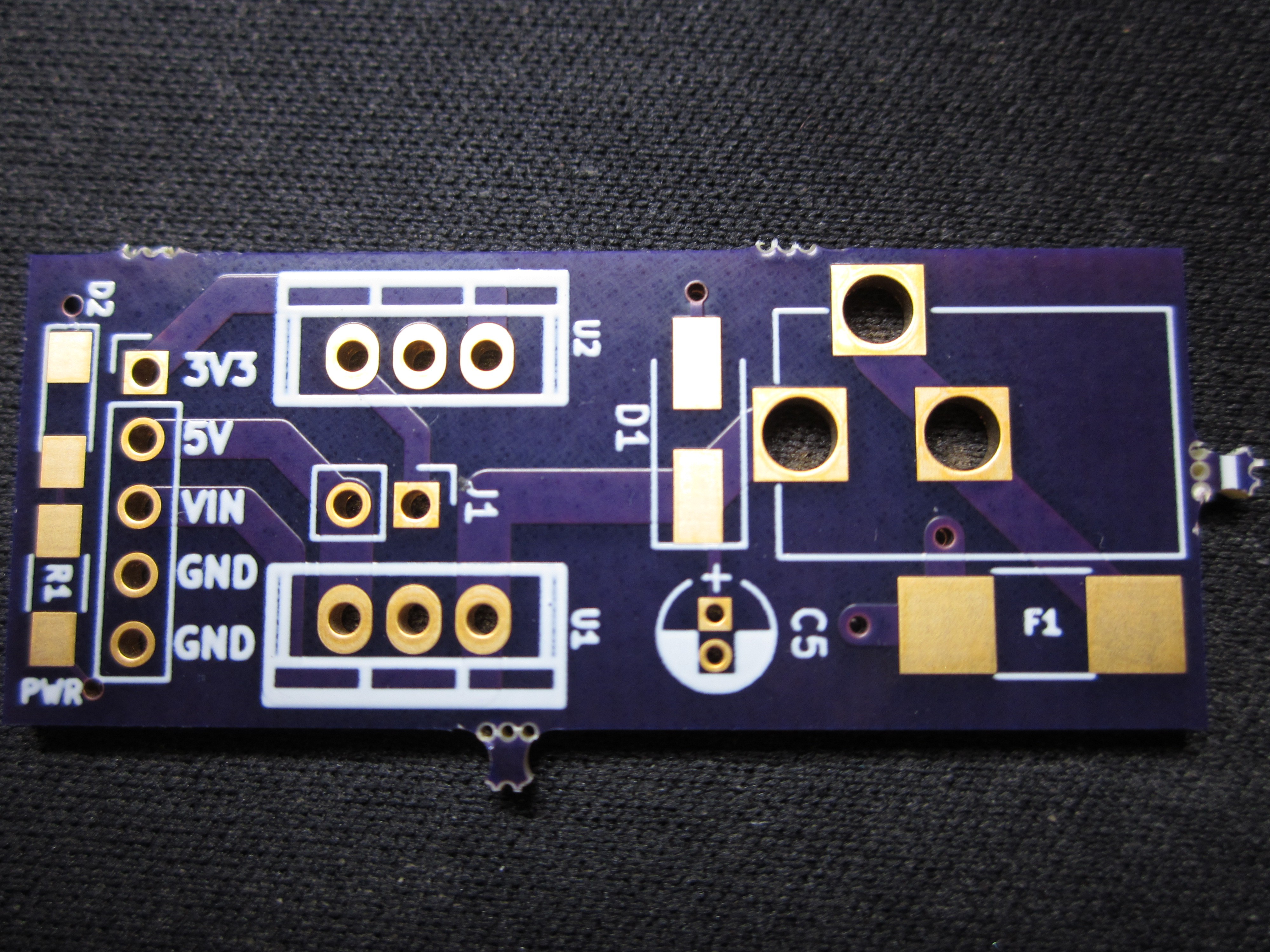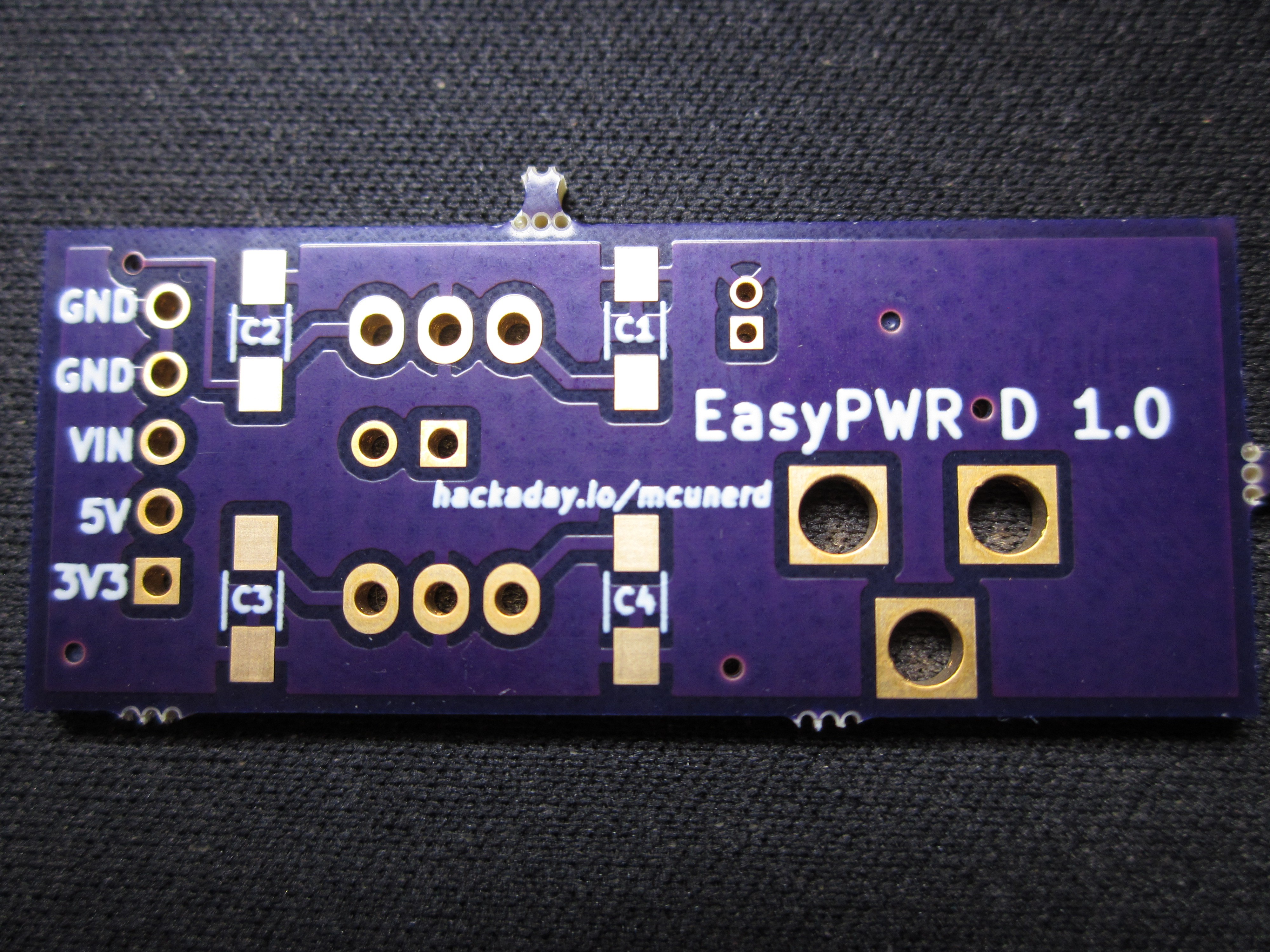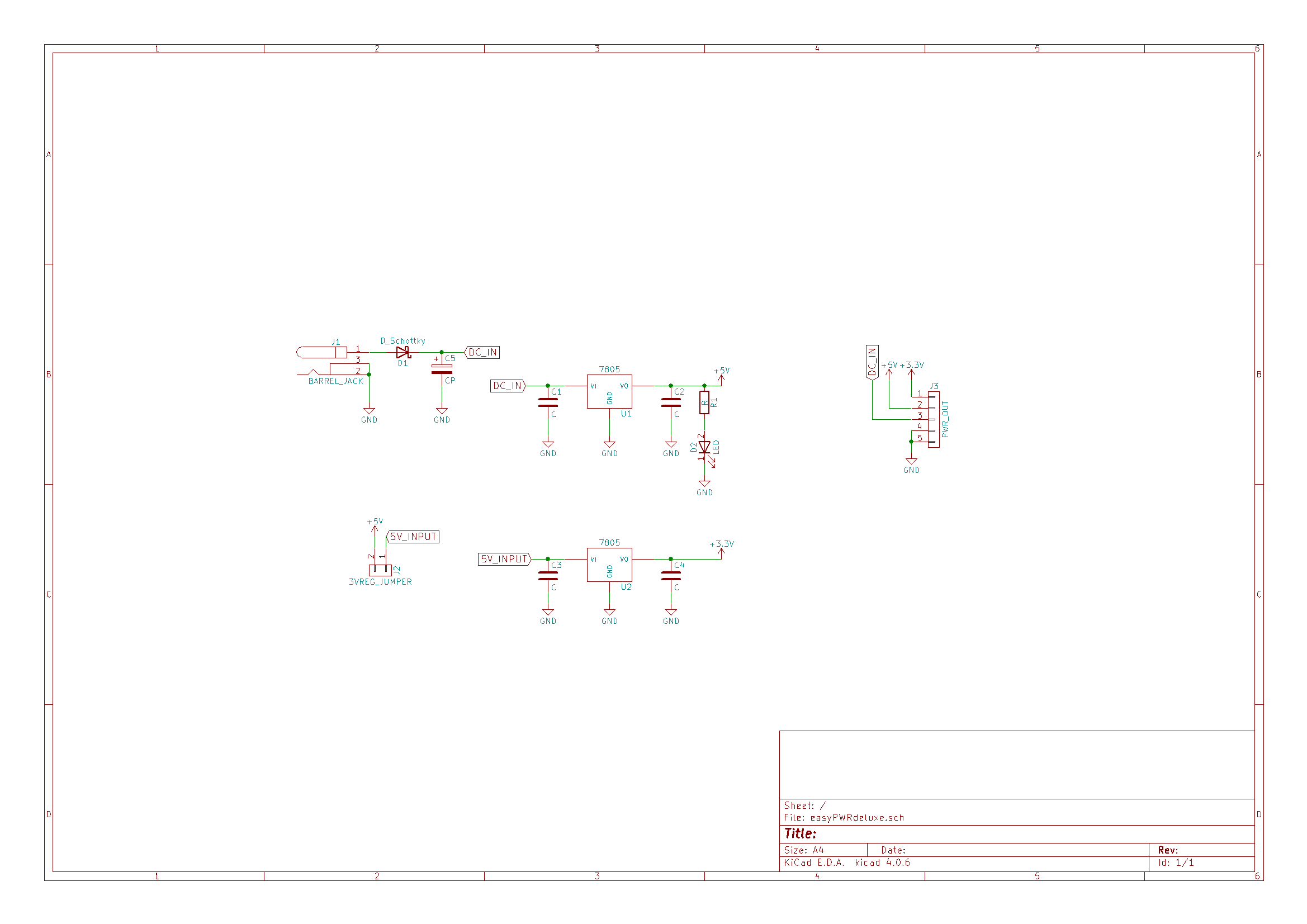-
EasyPWR Deluxe build complete
09/30/2017 at 17:30 • 2 commentsLast week the 1 uF ceramic caps came in, so I was able to finish it on Thursday (would have done it sooner in the week, but had too many other things going on.) A minor issue that I found is that the 3.3V regulator sits a little bit higher off the board than other regulators, so my heatsink doesn't make contact with the board.
The full parts list for the EasyPWR Deluxe:
1206 sized resistor (recommend a 2K+ value)
1206 sized LED
2.1 mm Barrel Jack
5x1 2.54 mm pin header
2x1 2.54 mm pin header
1 pin jumper
oki-78sr-5/1.5-w36-c 5v regulator (most expensive item other than the PCB itself)
1812L110/33MR 1812 size polyfuse
3.3V reg model MCP1825S-3302E/AB
2 1 uF 1206 caps for the linear regulator (C3 and C4 pads)
1 TO-220 heatsink
And of course the photos of the finished product below:
-
Finally selected a regulator for the 3.3v rail
09/08/2017 at 18:48 • 0 commentsIt's about time I selected a regulator for the 3.3V rail. I've selected the MCP18255-3302E/AB which has an output current rating of 500 mA. I already have the regulator, I'm just waiting on the 1uF ceramic caps to arrive.
-
The Deluxe version board is here!
08/13/2017 at 01:20 • 0 commentsSorry for the late post, I've been a bit busy. I did manage to finish designing the board by the end of the week of the last log. Incoming photos:
![]()
I still haven't come up with the exact model linear regulator to use for the 3.3V rail just yet. Overall I'm happy with the design so far. I did add a footprint for an optional electrolytic cap on the input, just in case and I had the board space to spare. I wanted t to add in a few more things such as some reverse-biased diodes across the outputs of both regulators to provide protection against inductive loads, but I wanted to keep the board size (cost) down.
If I were to make any changes, I would likely move the "PWR" label close to the actual LED(or just swap around the resistor and LED footprints), possibly move the polyfuse to the input positive terminal vs connecting it to the ground terminal, and increase the resistor value that I used for the LED even more as my LED was still on the bright side when I used a 1K resistor.
Parts list for the deluxe version:
1206 sized resistor (recommend a 1K+ value)
1206 sized LED
2.1 mm Barrel Jack
5x1 2.54 mm pin header
2x1 2.54 mm pin header
1 pin jumper
oki-78sr-5/1.5-w36-c 5v regulator (most expensive item other than the PCB itself)
1812L110/33MR 1812 size polyfuse
3.3V reg model tba
caps for the said 3.3V reg tba
-
I'm still here
07/25/2017 at 19:16 • 0 commentsI've been busy with other things and I've gotten the chance to start working on my projects once again. I've finally been able to find the magical polyfuse with the voltage and current rating that I've been looking for. The part isn't expensive, but sadly isn't listed on Ebay (at at reasonable price.) I hope to get a hold of a few via samples. I do plan to finish designing the board this week.
-
Working on the Deluxe version
05/25/2017 at 01:46 • 0 commentsAh nothing like having a load of other things distracting me away from the project. Anyways, I recently started working on schematic of the deluxe version. I was first thinking about doing a p-channel MOSFET for reverse polarity protection, but then I wanted something simpler and cheaper. I then thought about doing a reverse-biased diode and fuse. I wanted to use a resettable fuse but didn't find exactly what I was looking for in terms on an inexpensive smd one with a reasonable voltage and current rating.
I then decided to simply use a Schottky diode but once again I'm browsing Ebay tonight and may settle for a thru-hole resettable fuse. Anyways, here's the last revision of the schematic that I did, sure to change of course.
![]()
-
Selecting the best parts for the job for the deluxe version
04/29/2017 at 02:25 • 0 commentsI haven't done a PCB design yet, I'm still working out the exact components that I plan on using. I found out that the datasheet for the 3.3V linear regulator that I have on hand (ua78m33c) specifies a minimum voltage input slightly greater than 5V. I've had no issues myself with feeding 5V into it, but would prefer to not use a component outside of its recommended specs in the finished product.
-
Back to work soon
04/18/2017 at 23:11 • 0 commentsJust an FYI, I will be getting back to working on the project again, I've been busy the past two or so weeks with Easter and various outdoor projects that needed to be done before the summer heat kicks in. I hope everybody had a great Easter.
-
Thanks for following/liking
04/04/2017 at 12:13 • 0 commentsLooks like I'll be designing the deluxe version after all :). I'll likely start working on it in about two or so weeks. I've been busy with varous other projects lately.
Again, thanks for the support :)
-
Some possible additions for a possible deluxe version
03/24/2017 at 19:05 • 0 commentsSo far the little board has served me well in providing power to my various projects. I've been thinking about doing a deluxe version that could include.
Two voltage rails, 5V and 3V. A switching regulator could be used for for 5V. An LDO could be used for 3.3V and tied to the output of the 5V regulator, which would make it much more efficient vs using the voltage directly off of the wall wart, so heat dissipation is less of an issue.
A power indicator LED for one or both rails.
Reverse-polarity input protection
Reverse polarity protection (probably using a p channel MOSFET)
